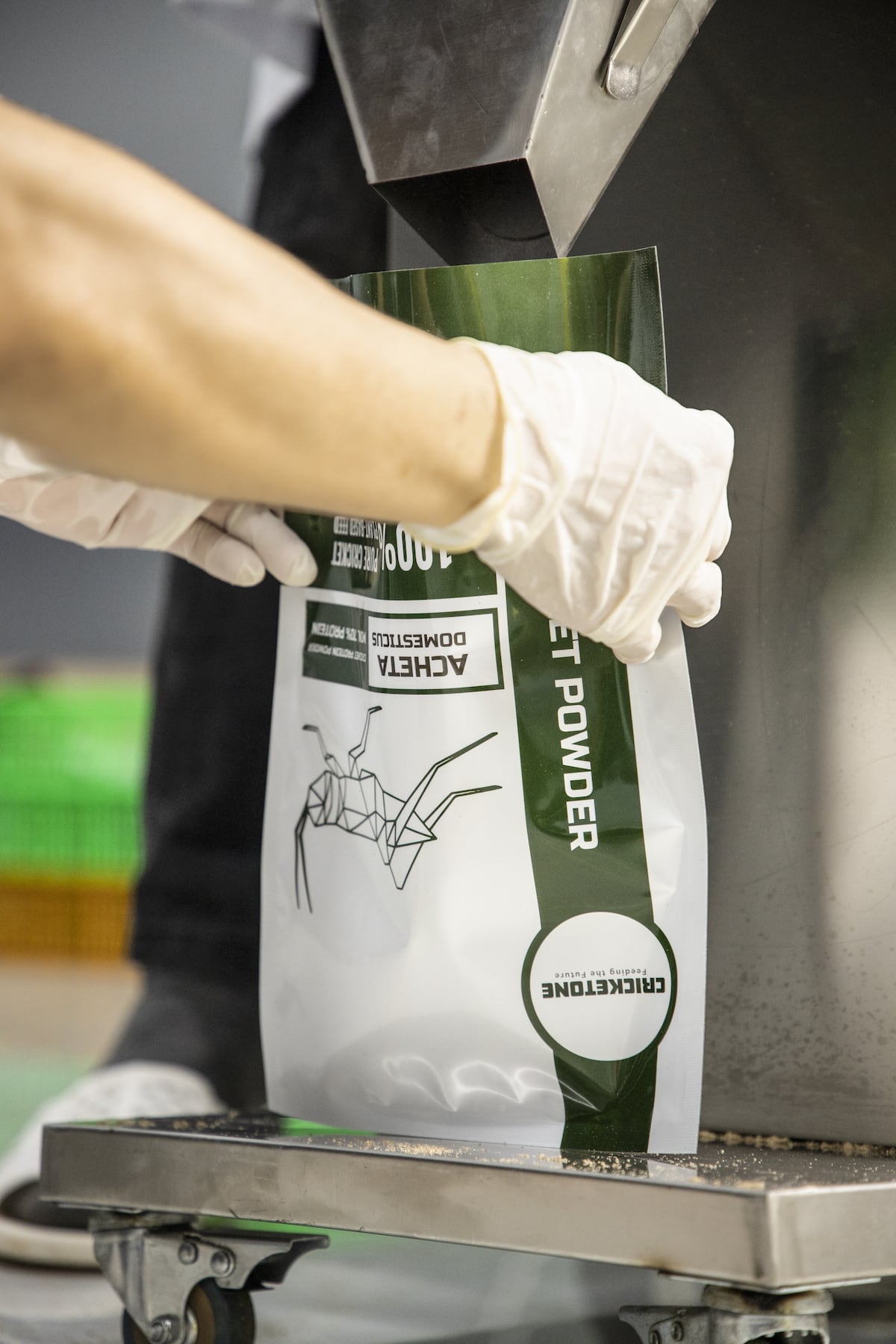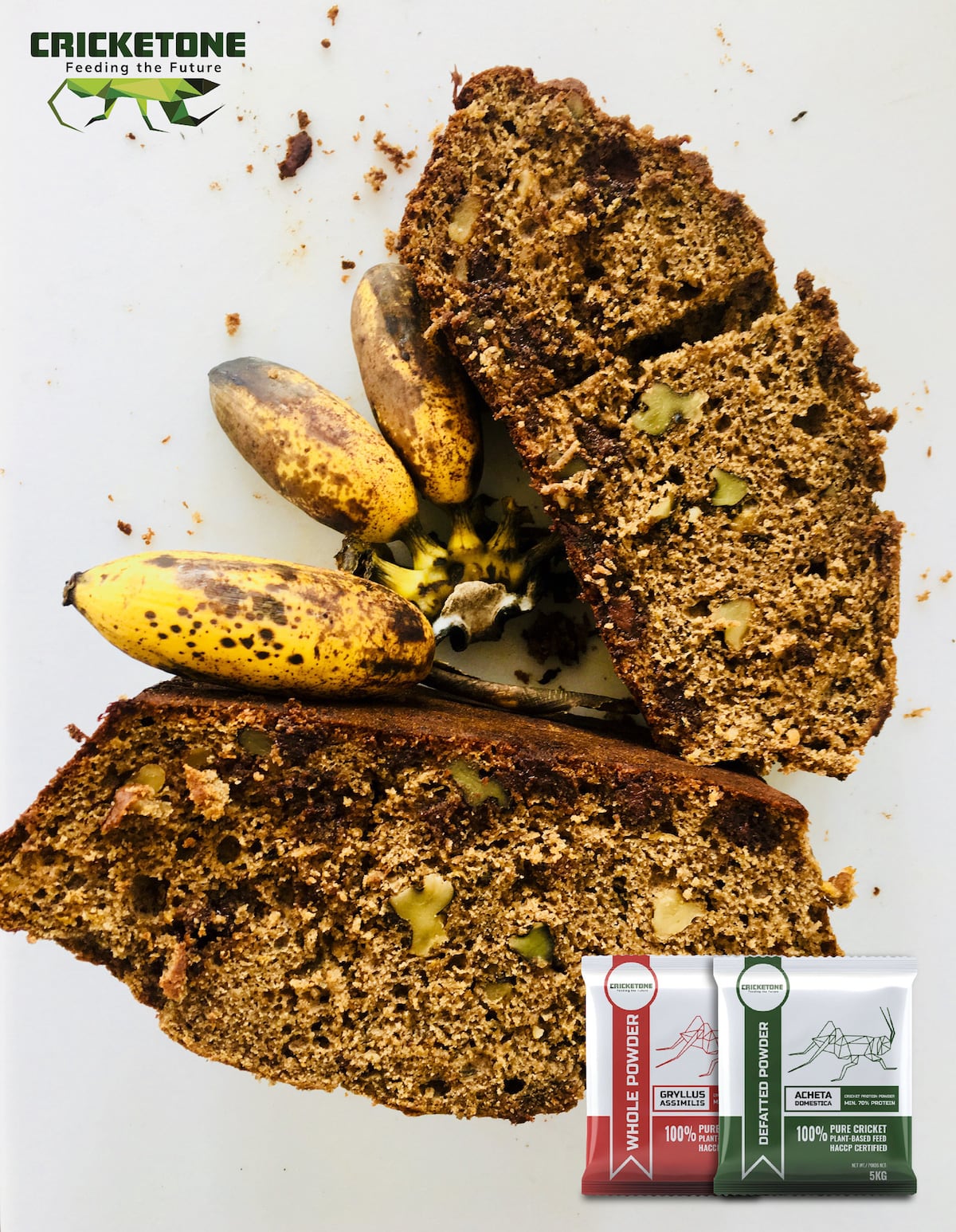Listen and subscribe to “Vietnam Innovators” in English: Apple Podcasts | Spotify | Google Podcasts | YouTube.
Listen and subscribe to “Vietnam Innovators” in Vietnamese: Apple Podcasts | Spotify | Google Podcasts | YouTube.
Good morning everybody, this is your host, Hao Tran. This is another episode of Vietnam Innovators, we’re super happy to invite a new guest this morning to our studio, the radio room. Bicky Nguyen, the co-founder and business development director of Cricket One. For those of you who don’t know, Cricket One is a start-up company trying to solve one of the world’s biggest problems by creating a sustainable supply chain for food. So let’s just hear it from Bicky herself. Bicky, welcome to the show.
Thank you Hao for hosting me today. And super excited to share about Cricket One. This is the right moment for the Vietnamese people to really tap into a new source of food. And the good thing about Cricket One is after four years of having been so actively promoting the product in Europe, North America and in other developed countries in Asia. We’ve had our products sold to twelve countries so far. And we are the only ones from Asia that have the permit to export for human consumption to Europe. This is the right moment to focus more on our home market.

Something like 2 billion people apparently eat crickets on a daily basis, is that right? Are Vietnamese familiar with crickets?
Yes, but those people are mostly from Asia: Thailand, Cambodia, and a little bit from Vietnam. And the rest are Latin American countries and some in Africa. We want to bring crickets to the countries who don't know about crickets. For them, crickets are a type of insect, and when you see an insect, the typical thing to do is to kill them right? But what we’re trying to do is to put it into their daily diet.
Vietnamese are familiar with crickets, but you just cannot find them in stores or on the streets yet. You have to go to some certain specific restaurant to get crickets. We do have a history of farming crickets, so it’s really not something novel. But it is just household farming, it’s very basic and traditional.
Out of all the insects and plant based products you could’ve used to make the Cricket One product, why crickets?
When we started the business almost five years ago, we did experiments on many types of insects. We tried mealworms, buffalo worms, the larvae as well... black soldier fly larvae, which is what we believed was the solution for animal feed, and of course, crickets. With every single experiment, we ran a feasibility study report. We evaluated the performance of the insect and what was most efficient in terms of farming.
We made predictions and created hypothetical scenarios wherein we can apply automation because the future has to be efficient. And we also thought about if and when we were able to grow production. Cricket was the star in terms of nutritional profile compared to the rest of the insects. They can be farmed in an intensive and efficient way, without technology of course. And we also had to think about ‘the taboo for consumers.’ Crickets are one thing, but having worms in their mouth, larvae... the taboo is quite heavy there.

Well before we do the taste test, can you tell me more about the products of Cricket One? Aside from the patty, do you have drinks?
Our business model is B2B; we supply finished ingredients to producers. But when I say finished ingredient, I mean food-grade, when you can consume it directly.We know making people consume the whole insect has been very abnormal in those focused markets. So the best form is to turn them into powder so that they can mix and it will become invisible.
It’s like a food substitute with protein, good fatty acids, minerals, and vitamins. Our main product is powder. We have a lot of variety. We have a defatted powder, which is the one where we removed the fat to boost the protein. Any products that want to have only protein we also have. And we have the soluble powder, which is completely soluble in water for drinks like coffee.
We sell to wholesalers and food producers. Our clients can be like cracker or tortilla chips producers… bread, pasta, cookies, and other starchy foods. 80 percent of our production is for export currently.
We realized after giving the producers and manufacturers these ingredients, sometimes they have no idea how to use it. And if they don't know how to do it in the correct way, it might be a big turn down for an opportunity to work with them. What we do is we present a finished product, the concept, and we explain it to them on how to produce and use it. For example, this burger in front of you. We actually don’t sell the burger, just what goes in it. We sell the key ingredients that take up the production of that patty.
Let’s say if I were a restaurant and I wanted to sell a Cricket One patty? How does that selling process work for me as a restaurant owner?
Either we introduce you to one of our clients, who produces the patty for you. Or we introduce you to an OEM (Original Equipment Manufacturer) product/facility. But if you have managed to equip yourself with some sort of basic equipment, you can just get the base from us and make the patties. Because the application here is that the base is the core thing. Most of the current suppliers in the market have only powder and it stops there. Maybe they’re limited in ability to develop a new product. We might acquire another B2C start-up, and back them with our ingredients. We can help them guide their strategy to launch our insect products to the market.

My initial impression was that this could be like the Impossible Foods, or Beyond Meat here in Asia, but with more of an insect approach. What do you tell people that compare you with those companies? Is that a fair assessment or comparison? Can share what those differences are and how you guys fit in the ecosystem of alternative/environmentally friendly food?
We produce the core materials, which can be the base to make everything. We can replace meat completely, so you can make burger patties, sausages, pate, ham with our ingredients. There is no one else in the market right now who has the technology to remove the exoskeleton of the cricket, so they can mix the powder with the other ingredients. We have the technology to really remove the exoskeleton, to make it less sandy, and to make it into a frozen base. Because when you make sausages, when you make meat products, you need frozen or cool meat. We have that ingredient with cricket, so what you can do is replace meat completely with our cricket base.
And compared to Impossible Burgers or Beyond meat, we have a clean label. We have the list of ingredients in full at the back, less than 50. The others have a list of up to 25 and then it's just numbers. It’s too highly, deeply processed. When you have a list that's that long, it means there are a lot of additives that you cannot list in full because of their length. So what you do is you give it a number. But as consumers, we can’t be standing in the supermarket Googling what number is which. Therefore, to help our clients, food producers really need to present a clean label and a healthy product.
We’re not really trying to compete with plant based. We’re trying to give our consumers another option. Maybe you can have meat, but you can also have another option that’s not as bad as meat, but as nice as meat. And the good thing is that you can lead a very responsible life, your food will consume less water, and release less CO2 into the atmosphere.
To convince wholesalers is one thing, but you also have to make sure that they are successful themselves. Especially if you’re going to do like these burgers. How do help them sell their product better?
As ingredient suppliers, we play a big part. What we do is we sponsor a lot of events that educate consumers on the benefits of consuming insects. We are still trying to look for opportunities. We have a very strong content strategy team and already sponsor a lot of food influencers globally. We also support a lot of startups because they don't have money for R&D.
We're very lucky to have a very strong food scientist team. What we do is develop fundamental concepts. For example, if my client wants to buy a product, we'll have a 15 minute interview with him asking: how do you want it to be, what is your target audience, and then we will suggest the right products to use and what the right process is. The rest is how to make the recipes, how to get the signature flavor.
Aside from the benefits and convincing these partners to work with you on all parts of the supply chain, let's talk about cost. Is there something to this burger here, is there a cost difference….?
It's cheaper and it's also healthier. When we first "invaded" the global market of cricket ingredients, people were selling 50 dollars per kilo, but we cut that in half and have a healthier margin. Vietnam has the perfect location and the perfect environment to farm crickets. All the other costs here are much lower because we have very good talent, the education quality in fields like food science in Vietnam is not far from what we can get in Europe and North America. And the cost to operate here is much lower.

Let's talk about your business. Where are you guys looking to invest? What kind of products are you hoping to push out?
That's a very nice question. We are preparing for another fundraising round. We have been raising three rounds before, and it has gotten us this far as the largest supplier right now in the market, globally. We have a facility of 45 tonnes a month. The good thing is we never have to use those Shutterstock pictures because we have the real facility.
We are right now the largest supplier in the market. However, for the last couple of years, since we started launching the products, we went from working with small-medium scale clients to large ones, like Sears, a mainstream producer. We’re working on a fundraising event for that moment because we need to triple up our production. We used to talk about half a ton, now we’re talking about tonnes.
What is the market size for a business like you guys? Where does the cricket/insect market sit in the market of alternative food?
It’s not a big market, it’s just 5 years old into maturity. So when I said we are the largest supplier, it doesn’t really make us a commodity company, but it’s growing very well and right on track. Especially during the pandemic, it has really proven that you have to be more sustainable in consuming food.
Last year, the market was $1.3 Billion, globally for insects only. And cricket takes up a very big proportion of that. That $1.3 Billion is actually from human consumption only. So the forecast, looking at the past three years, then we look at the future, how consumer behavior and the perception of large food producers might change, we can be certain that it's going to get to $1.8 Billion by 2025.

I’m sure that our listeners here today are really curious about the startup ecosystem in Vietnam specifically. You’ve been in that community for a long time here in Vietnam. What are some of the pros and cons of starting a venture backed business in Vietnam, from your experience?
The pros are I think the Asian market, or Vietnam in specific is attractive to foreign investors. You see there are a lot of Singapore based funds, Silicon Valley based funds, and European ones-- which is a very conservative financial market. They are starting to look into Southeast Asia and into Vietnam because the capita here is being used very efficiently.
For example, in my particular experience, if we raised, let’s say a million dollars, we’re going to build ten times what people can build with one million dollars overseas. For me, once you can get the first round closed, the second and third one will be very easy. Of course you have to perform very well because you’re getting a lot of attention. The good thing is this is not our first startup, we founded another Architecture startup before Cricket One, Nam and I. Back then we had quite limited options for finance, it was 7-8 years ago.
Now, after being away for a while, when I came back, it was super active. I mean, every week you have some sort of event where you can meet up with investors, with the ecosystem, and influencers where they can help you build your business, and tap into those capital. Even Vietnamese investors are starting to understand those concepts of venture capital investment. But now it has changed and people are starting to understand what it is, even my parents understand what it is.
Some cons would be regulating money to flow straight into your business. Because right now, we still have to keep the holdings somewhere else, which costs us money yearly. And we don’t see the benefit of that. It’s only because we don’t have the jurisdiction to control the venture capital investment. That’s one thing, maybe it has changed.
It's been nice chatting with you today Bicky. But before we wrap up today, I don’t want to get this too cold, it has been sitting out here for 20 minutes now. Thank you for preparing this taste test today. It’s definitely not beef, it almost tastes like a sausage, like texture, a little bit . But I like that it is firm, it’s not too watery, and doesn't always spill out. The texture is my favorite part, actually. It’s thicker than your typical burger. Thanks so much for your time this morning and for your preparing an unexpected Cricket Burger.

